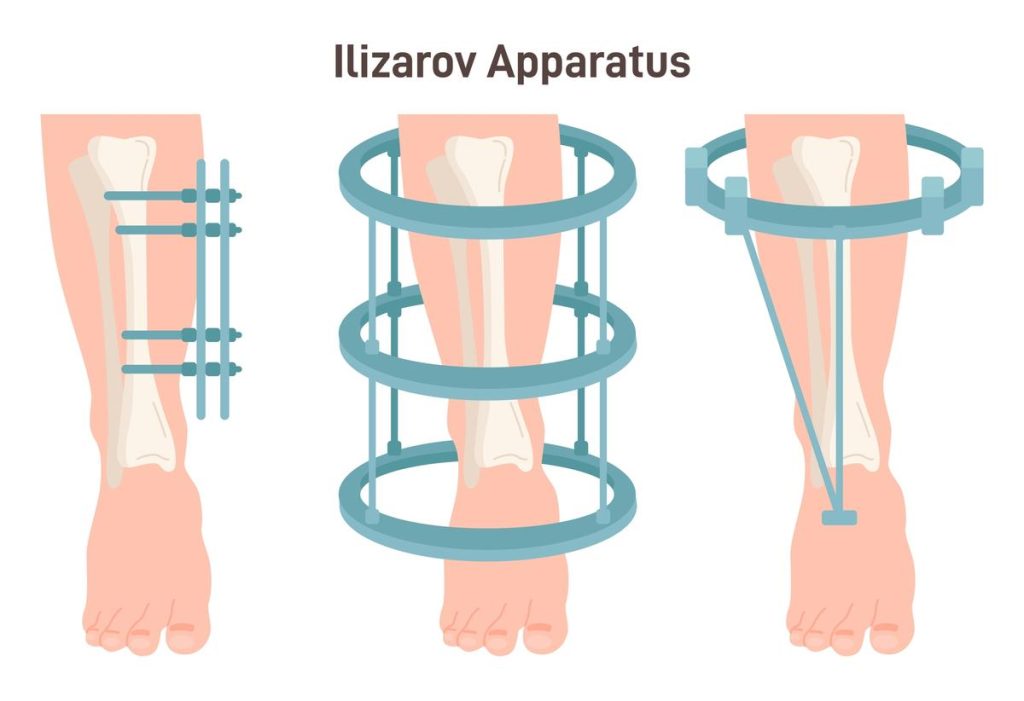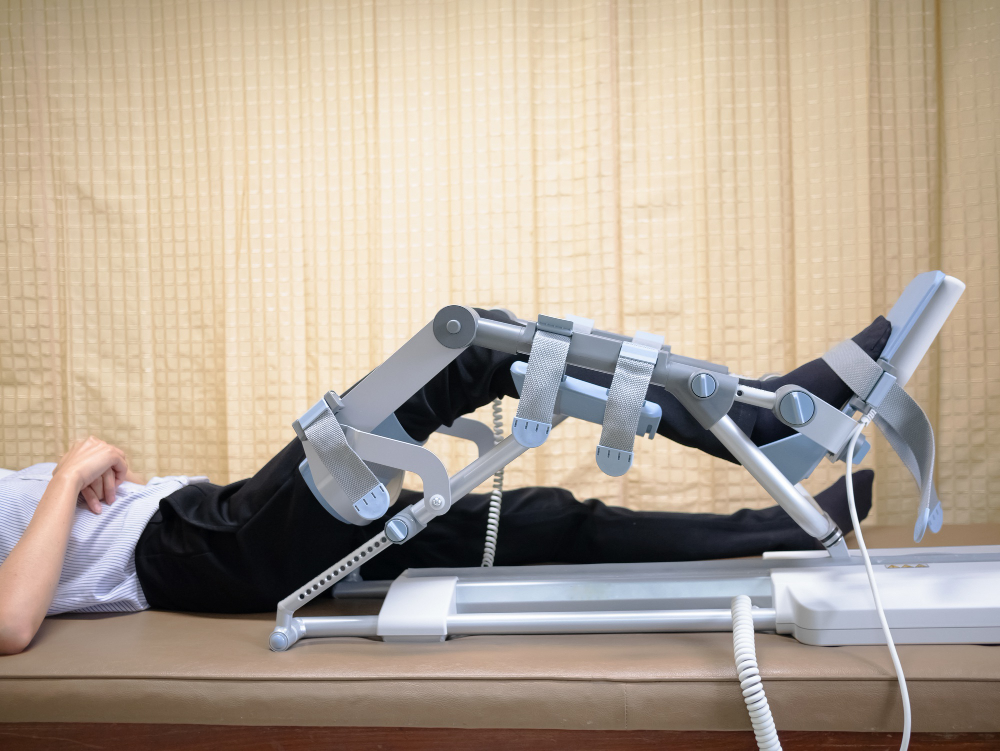Limb Lengthening Surgery
Limb lengthening surgery is a procedure that gradually makes an arm or leg bone longer. This procedure treats skeletal dysplasia, bone growth issues and bone length differences.

What is limb lengthening?
Limb lengthening is a procedure to lengthen the bones in the arms or legs. This is done as a gradual process, so that the bones and soft tissues (skin, muscles, nerves, etc.) slowly increase in length. Typically, the process take several months. Limb lengthening can also be combined with gradual or acute deformity correction. At the International Center for Limb Lengthening, we routinely lengthen the humerus (upper arm bone), radius/ulna (forearm), femur (thigh bone), tibia (shin bone) and metatarsals (bones in the foot that affect toe length).
What happens before limb lengthening surgery?
Before you undergo surgery, your provider will take X-rays of your bone and measure it. These tests help your provider determine how long the bone should be. In most cases, you can expect your bone to grow up to 2 inches per surgery.
Your surgical team will tell you how to prepare for surgery. Ask your provider:
- Which medications you should take — or stop taking — before surgery.
- When you should stop eating or drinking before surgery.

The day of your surgery, your provider will give you general anesthesia, which puts you to sleep and prevents you from feeling pain. Most people stay in the hospital for about three days after surgery. Then, you’ll need a friend or family member to take you home.
Before your procedure, arrange for someone to stay with you for several weeks after surgery. Most people need assistance with everyday tasks like getting dressed, preparing meals and using the bathroom. If you’re lengthening a leg bone, you won’t be able to walk on it right away. You may use a wheelchair, crutches or other aids.
What Does the Procedure Look Like?
The leg-lengthening procedure usually happens in four stages:
- Surgery – called osteotomy
- Latency period – a period of rest
- Distraction – the pulling apart of the bones
- Consolidation – healing, bone growth, and hardening of the new bone
Surgery. During your surgery, the doctor will the cut the bone into two pieces. They may also do certain procedures to soften your muscle fibers and prep the nerves for new bone growth. For example, if you’re having your shinbone lengthened, your doctor might lengthen the Achilles tendon to make the next step easier.
They’ll also insert an orthopedic limb-lengthening device during the surgery. There are two types:
Internal device. This type is inserted into the bone. Precice nail is a commonly used internal device.
External fixator. This stays on the outside of your leg. Metal pins and screws will hold the contraption in place.
Over a few months, screws and pins will be tightened, using a metal device attached to it. This slowly pulls the bones apart. Commonly used external fixators include Taylor Spatial Frame or the Ilizarov device.
You’ll be under general anesthesia during the surgery. You’ll mostly feel nothing and sleep through the procedure.
Latency period. Once the surgery is done, your bones will be allowed to rest for 5-7 days. During this time, your doctor won’t manually lengthen the bones.
Distraction. Also known as “pulling apart,” during this stage, you or an instructed family member will adjust the external or internal orthopedic lengthening device to slowly pull apart the two bone segments.

You’ll need regular physical therapy and daily exercises during the lengthening phase to keep your range of motion and bone strength. You might need up to five physical therapy sessions per week. Check with your doctor to see what they recommend for you.
The adjustment is very small. Usually, it’s between .75 millimeter and 1 millimeter (0.04 inches) a day. Typically, you can lengthen the bone by 1 inch each month.
The bones are adjusted daily until they extend to the desired length. New bone, called regenerate bone, will slowly grow to bridge the gap between the two separated pieces.
Consolidation. This is the last stage when the new bone begins to get harder, thicker, and solid. This happens when calcium deposits itself into the new bone (calcification).
During this phase, you doctor may encourage you to put weight on your leg (with the help of a walker or crutches). That helps strengthen the new bone. You’ll need to eat lots of protein and take vitamin and mineral supplements to boost bone strength.
What is the recovery time for the limb lengthening procedure?

Recovery time from the limb lengthening procedure varies among patients, with the consolidation phase sometimes lasting a considerable period – especially in adults. As a general rule, children heal in half the time as it takes for adult patients. For example, when the desired goal is 1½ inches of new bone growth, a child will wear the fixation device for three months. In adults, although bone healing takes longer, the use of the internal lengthening nail makes the process more simple as there is no external fixator needing to be worn.
Throughout recovery, physical therapy plays a crucial role in keeping the patient’s joints flexible and in maintaining muscle strength. Patients are advised to eat a nutritious diet and to take calcium supplements. To hasten bone healing, gradual weight-bearing is encouraged and the patient takes supplements like vitamin D3 and calcium to hasten bone healing.
How much will my height grow with surgery?
In lengthening surgery, it is possible to grow 10-15 cm with one session. With sessions each requiring a different surgery, both lower and upper region of legs can be lengthened. Especially for children with dwarfism syndrome occurring from achondroplasia or hypocondroplasia, the first session lengthening should be performed between ages of 5 – 7.
While the surgery starting age is accepted as 7 in the classical literature, in some cases starting at ages 2 – 3 is also possible. 10 – 15 cm of growth in the first session of the surgery, 8 – 12 cm in the second session, and 8 – 10 cm in the third session can be provided. For body limbs to have a healthy ratio, arm lengthening surgery is performed between ages of 14 – 16 for 10-12 cm of growth. Since bones harden after 20 years of age, the first session is performed at ages of 5 – 7, second session at 10- 12, third session at 14-16 and lengthening process is completed.
Lengthening surgery can be performed for adults above 18 years of age and for aesthetic concerns apart from diseases. For people with wrongly mended fractures, diabetes, smokers, or accident victims who have short stature, bone correction with special techniques can be used to equalise limb length. For lengthening due to cosmetic reasons, patients have to go through psychiatric evaluation. With the help of special devices and techniques, lengthening between a quarter millimetres and 1 millimetres is provided. 10 – 15 cm of growth is possible according to reason of short stature, age, and bone structure. Patients have to receive physical treatment after the surgery for development of muscles.
Who is a good candidate for limb lengthening?
You, your family, and your child’s surgeon should consider several factors when deciding if limb lengthening is a good choice.
- Limb stability: The joints on both ends of the bone to be lengthened need to be stable. Otherwise, lengthening could cause joint problems.
- Tissue health: If the tissues around the area are scarred, by trauma for instance, limb lengthening could risk further damage to those tissues.
- Degree of limb-length difference: Whether in the legs or arms, a difference of a centimeter or less in limb length does not tend to interfere with posture or function. Differences of up to two or two-and-a-half centimeters can be addressed with measures such as shoe lifts. Limb lengthening is only advisable to correct a limb-length difference that interferes with your child’s daily activities and function.
- Age: While some older adults undergo limb lengthening, childhood and early adulthood is the best time to undergo limb lengthening, when the body is most likely to create new bone.
- Ability to meet the demands of limb lengthening: Limb lengthening is a long and involved process that requires daily diligence on your part and your child’s. Even after the lengthening stage, your child will need to protect their limb for months while their bone and tissues heal.
Treatment in Türkiye:
The medical staff of surgical teams, doctors and consultants in Rehab Türk can provide the best treatment options and free consultations – by striving to keep abreast of the latest medical technologies and methods.

